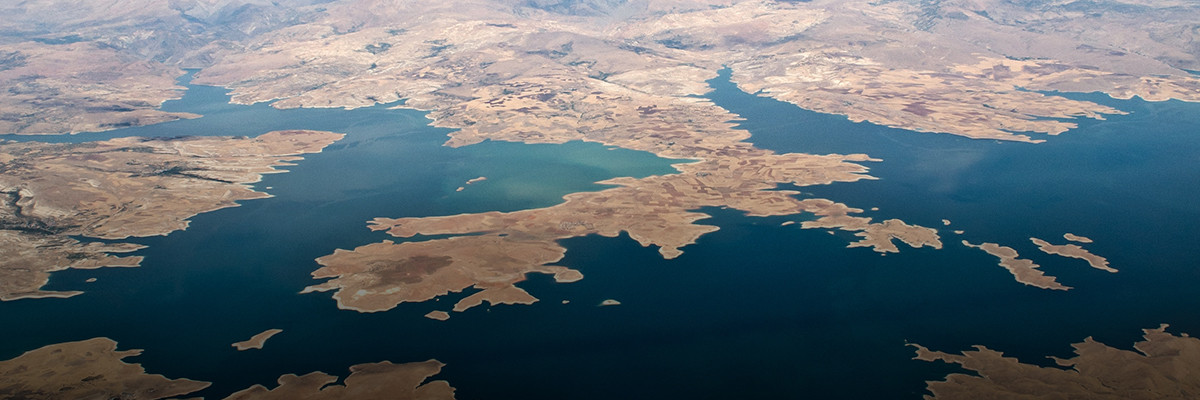
Authors
-
Samantha Harris
Former Associate Director, BSR
-
David Wei
Former Managing Director, Climate and Nature, BSR
According to the U.S. National Oceanic and Atmospheric Administration (NOAA), 2017 was the third-warmest year on record, the U.S. experienced three of the top five costliest hurricanes in U.S. history that same year, and the 20 warmest years on record have all occurred since 1995. Businesses already experience the negative impacts of climate change, from infrastructure damage to disruptions to logistics, input supplies, and customers. Since 2011, the World Economic Forum’s annual Global Risks Report has ranked climate risks a high priority for business in terms of both likelihood and impact.
It is critical for business to understand the full spectrum of climate risk: not merely how physical impacts affect infrastructure, but also the extent to which their workers and assets are exposed and how communities experience and adapt to these impacts. It is clear from our research that businesses do not yet fully recognize and understand how climate change affects the people in their value chains.
What businesses often overlook is that building climate resilience simultaneously advances other goals, including respecting human rights, increasing inclusivity, empowering women, improving the health of workers and communities, and managing supply chains.
What businesses often overlook is that building climate resilience simultaneously advances other goals, including respecting human rights, increasing inclusivity, empowering women, improving the health of workers and communities, and managing supply chains. To help businesses explore the interaction between climate and these areas, and to direct companies to opportunities for synergy and interventions that will build climate resilience, BSR is launching a series of reports on the “nexus” between climate resilience and other key sustainability issues: supply chain, health, inclusive economy, women’s empowerment, just transition, and human rights.
These reports aim to provide companies with an initial understanding of the importance of these intersections and, more importantly, the business case for action to drive resilience inside their companies, across supply chains, and within vulnerable communities.
The first report in this series, Climate and Supply Chain: The Business Case for Action, explores the business case for integrating climate risks into supply chain management.
At its core, supply chain management has four primary objectives, any of which could be negatively affected by climate impacts:
- Reduce the overall cost of production,
- Enhance the speed and responsiveness of delivery,
- Enhance the quality of goods and services produced, and
- Manage the uncertainty of major disruptions.
The characteristics of modern supply chains—their global geographical reach, specialized inputs that are increasingly produced in specific locations, and reduced inventories from just-in-time production—render them more vulnerable to disruption by climate risks.
For example, during Thailand’s severe flooding in 2011, more than 14,500 companies reliant on Thai suppliers suffered business disruptions worldwide and total insured losses were estimated between US$15 billion and US$20 billion. Western Digital, with one third of the global hard drive market, lost 45 percent of its shipments, HP lost US$2 billion, and NEC cut 10,000 jobs due to a global shortage of hard disk drives.

The recommendations of the Task Force on Climate-related Financial Disclosures (TCFD) provide a clear categorization of climate risks, which are unifying the vocabulary to describe them. The task force uses two categories of risk, both of which companies should assess throughout their supply chains:
- Physical climate risks from acute weather events and chronic climate patterns are disrupting the availability of raw material and energy supply, supplier operations, and local communities along the supply chain.
- The transition to the low-carbon economy also presents policy and legal risks that result from several trends, including the pricing of greenhouse gas (GHGs) emissions, disruptions from new technologies like blockchain, market risks from growing customer demand for low-carbon and climate-resilient goods and services, and reputational risks to a company’s brand equity and future business.
BSR recommends that companies address climate risks in their supply chains by focusing where they have the greatest impact and greatest influence and taking several steps:
- Consider a broad range of climate risks and prioritize parts of the supply chain that are most at risk.
- Implement supply chain actions, including with internal procurement teams, with suppliers, and through broader collaboration, and develop measurable targets for these efforts.
- Evaluate the impact of supply chain actions and adjust programs and goals over time.
By integrating climate risks and building the climate resilience of the communities on which supply chains depend, companies increase the likelihood of fulfilling their supply chain objectives. To learn more about how your company can build climate resilience into its supply chain, download the report or contact us.
BSR’s climate and supply chain nexus report is the first in our series. Stay tuned for more on the connections between climate resilience and health, inclusive economy, women’s empowerment, human rights, and a just transition to the low-carbon economy in the months to come.
BSR’s latest sustainability insights and events straight to your inbox.
Let’s talk about how BSR can help you to transform your business and achieve your sustainability goals.